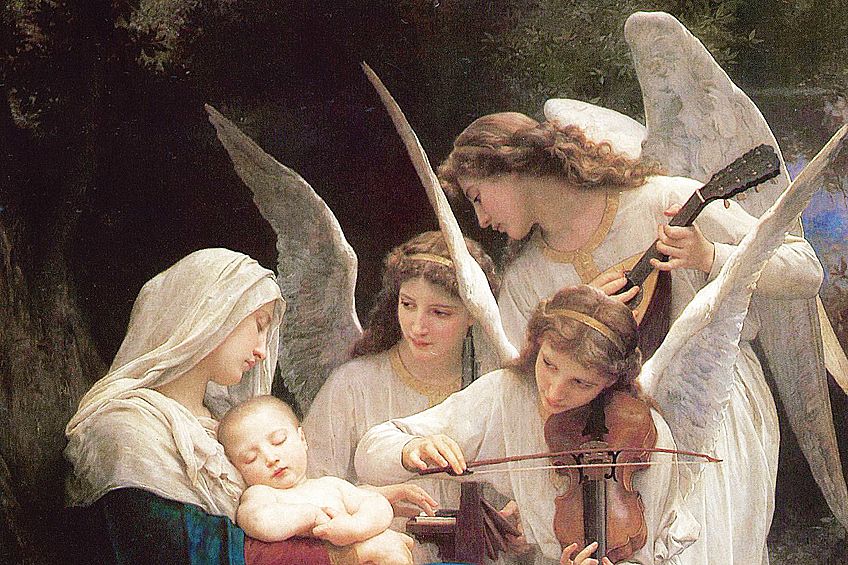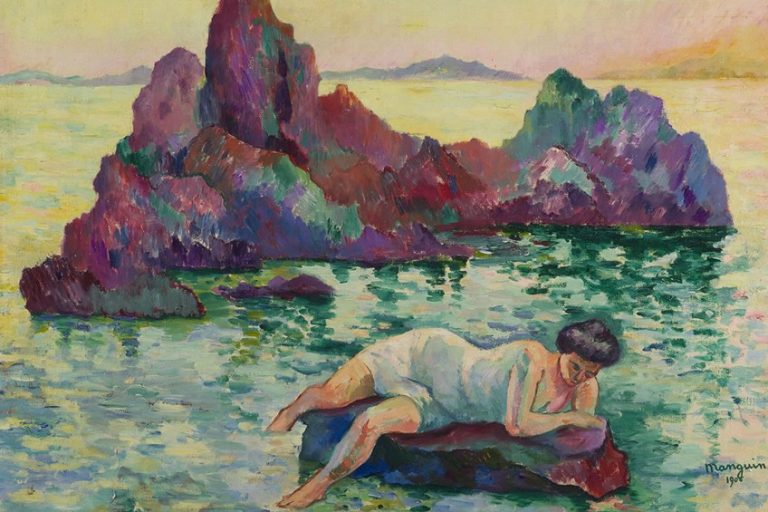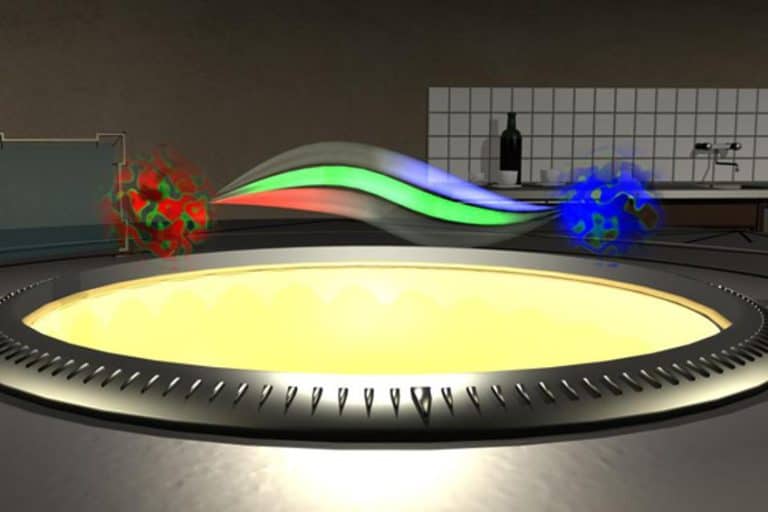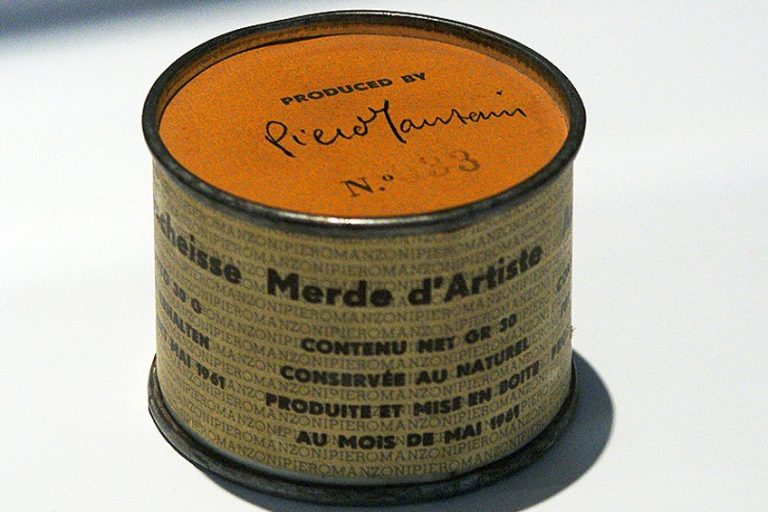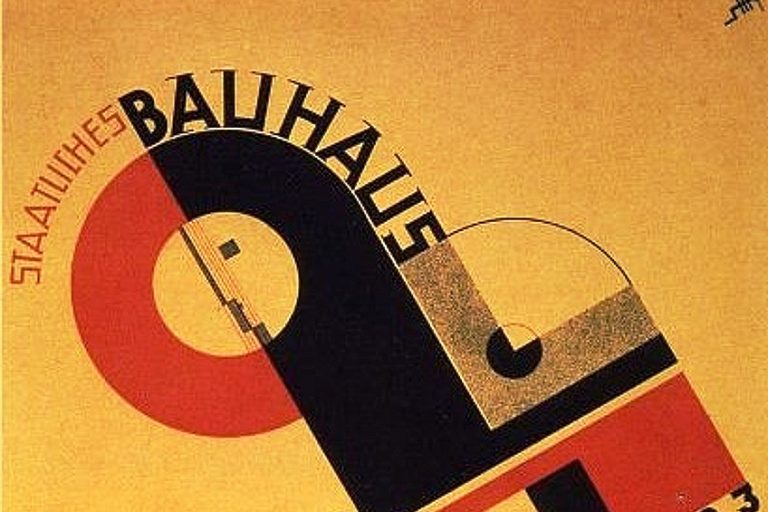Angel Art History – Exploring Angels Throughout the Ages
For many people, angel art history is regarded as important because it documents how humans perceived the messengers of God through the ages. Angels in Renaissance paintings, for example, had their own distinct look based on cultural and artistic trends of the time. Let us find out more about the history of these old paintings of angels, and explore a few of the most renowned examples ever produced.
Table of Contents
- 1 An Introduction to Angel Art History
- 2 Famous Old Paintings of Angels
- 2.1 Madonna and Child with Angels (1420) by Pietro di Domenico da Montepulciano
- 2.2 Saint Michael Triumphs over the Devil (1468) by Bartolomé Bermejo
- 2.3 The Mystical Nativity (1500) by Sandro Botticelli
- 2.4 Virgin and Child with Four Angels (1515) by Gerard David
- 2.5 Conversion of Saul (1545) by Michelangelo
- 2.6 The Triumph of Victory (1614) by Peter Paul Rubens
- 2.7 The Annunciation of the Lord (1660) by Bartolome Esteban Murillo
- 2.8 Song of the Angels (1881) by William-Adolphe Bouguereau
- 3 Frequently Asked Questions
An Introduction to Angel Art History
Angels have been a common topic for Byzantine and European artworks since the early Christian art period. There are also many examples of angels in Renaissance paintings and sculptures. Angels are typically depicted as exquisite in both Islamic and Christian artworks, however, there are other portrayals that depict them with horrific and scary traits, most notably in the representation of the ophanim and cherubim. Many angels in art may appear to the contemporary eye to be either female or male based on their clothes or behavior, but before the 19th century, even the most feminine-looking figures lacked breasts, and the angels were generally regarded as genderless. This traditional approach was often abandoned in 19th-century art, particularly funerary artworks.
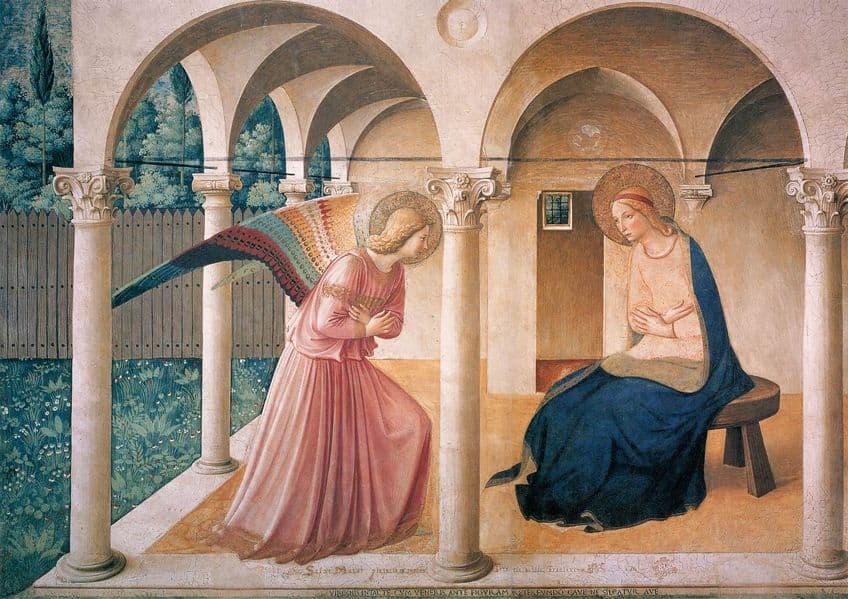
Depictions of Angels in Early Christian Churches
In the era of early Christian churches, specific beliefs about how to depict angels started to emerge. Because angels are described as pure spirits, the lack of a specific shape has allowed artists to express themselves freely. Gabriel appears in the “image of man” in Daniel 8:15, as well as being described as “the man Gabriel” in Daniel 9:21. Such anthropomorphic angel representations are consistent with earlier angel accounts, such as in Genesis 19:5, and they were often portrayed as young males. The first known Christian representation of an angel is in the Catacomb of Priscilla, which dates to the mid-third century and depicts the Annunciation, which portrays Gabriel without any wings.
Depictions of angels on sarcophagi and artifacts such as reliquaries and lamps from that time period also portray them without wings, such as the figure in the Sacrifice of Isaac (c. 359 CE) tableau in Junius Bassus’ Sarcophagus.
A dove replaces the archangel in a 3rd-century fresco of the Hebrew children in St. Priscilla’s cemetery, while the Hand of God replaces the celestial messenger in a 4th-century portrayal of the same subject in the coemeterium majus. The oldest known image of angels with wings is on the Prince’s Sarcophagus, which was unearthed in the 1930s in Istanbul and ascribed to Theodosius I. Flying winged angels, typically in pairs surrounding a central character or object, are visually modified versions of the winged Victories produced in the Classic era.
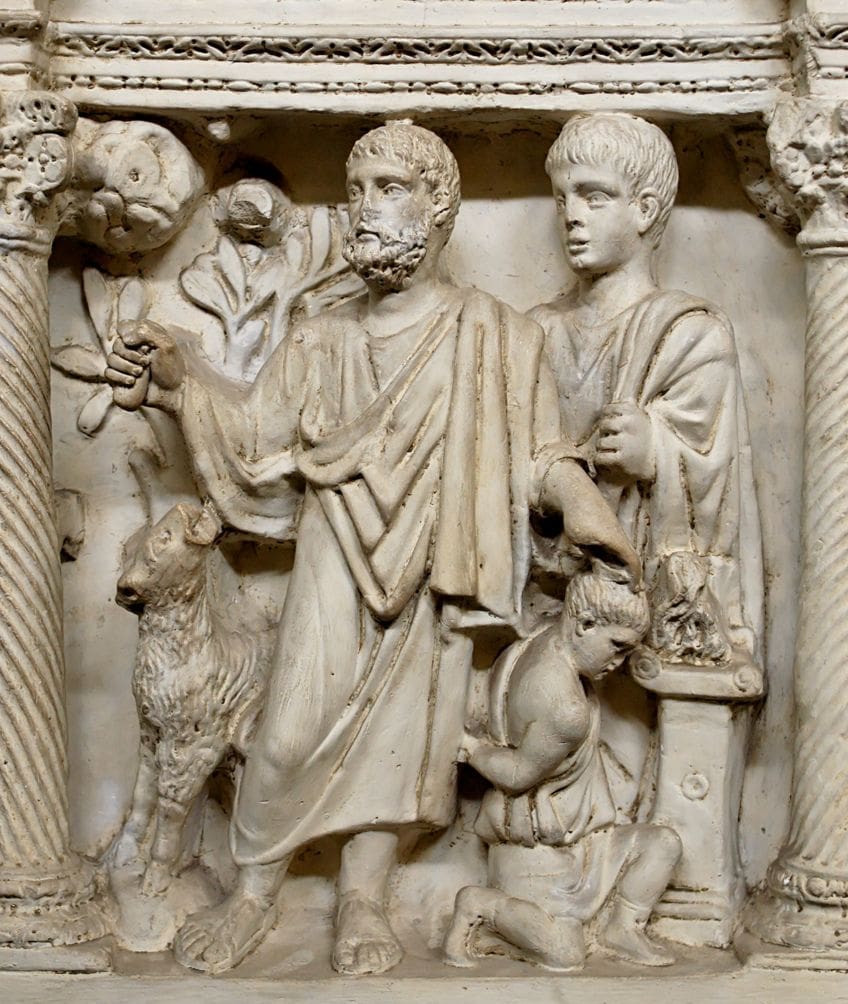
Saint John Chrysostom highlighted the importance of angel wings at about the same time: “They exemplify nature’s magnificence. That is why the archangel Gabriel is portrayed as having wings. Angels do not have wings, but one should be reminded that they depart from the heights of their most elevated residence to reach humankind. As a result, the wings ascribed to these forces have no purpose other than to emphasize their splendor”. From then on, angels with wings were commonly depicted in Christian artworks. Multi-winged angels, typically with only their wings and faces visible (particularly cherubim and seraphim), are borrowed from Persian art and are normally depicted in heavenly settings, instead of portrayed performing duties on earth. They are usually found in the pendentives of church domes.
Angels in Byzantine Art
Angels occur frequently in icons and mosaics in Byzantine art. Winged Greek statues such as the Winged Victory of Samothrace (190 BCE) provided inspiration for many artists. They also took inspiration from imperial imagery. Court eunuchs had the potential to advance to positions of power within the Empire. They acted as trustworthy messengers and performed ceremonial responsibilities.
Justinian’s legislation reveals that the majority of them came from the Caucasus, with blue eyes, light hair, and light complexion, as well as attractive features and bodies which were favored by Eunuch slave owners.
Those who were castrated as children exhibited a different skeletal structure, as well as a lack of complete masculine musculature, and body and facial hair. They would dress in a white tunic adorned with gold as officials. Whether intentionally or unconsciously, Byzantine artists were influenced by the image of the royal eunuch. An angel wearing linens and golden jewelry is mentioned in Daniel 10:5–6. Angels, particularly the archangel Michael, who was seen as God’s military enforcers, started to be depicted in Late Antique military garb.

This was the standard military attire, which includes a tunic that reaches the knees, and an armor breastplate, but it is also frequently the distinctive attire of the Byzantine Emperor’s bodyguard, which includes a long tunic and a long golden and jeweled pallium that is only worn by the Royal house and their closest guards and is depicted in icons of archangels. In Western paintings through the Baroque era and beyond, as well as in Eastern Orthodox icons up until the present, the standard military garb was still used. Other angels started to be traditionally portrayed as wearing long robes.
Angels in Medieval Paintings
Images of angels in medieval art were influenced by Byzantine art. They typically wore a cope over a dalmatic in the later Middle Ages, notably Gabriel in depictions such as The Annunciation (1436) by Jan van Eyck. This affirmed the authority of the clergy by showing that, despite their eminence, they were unable to celebrate the Eucharist and, as a result, were outranked by all priests in this regard.
White garments were often featured in early Christian artwork, and they were occasionally tied with the Revelation’s “golden girdle”.
Senior angels in the medieval era often wore every color, while lower levels wore white. Early Renaissance artists like Jan van Eyck and Fra Angelico created paintings of angels with a variety of colorful wings. As can be observed in da Panicale’s Baptism of Christ (1435), depictions of angels evolved to integrate medieval ideas of beauty with feminine concepts of beauty and grace.
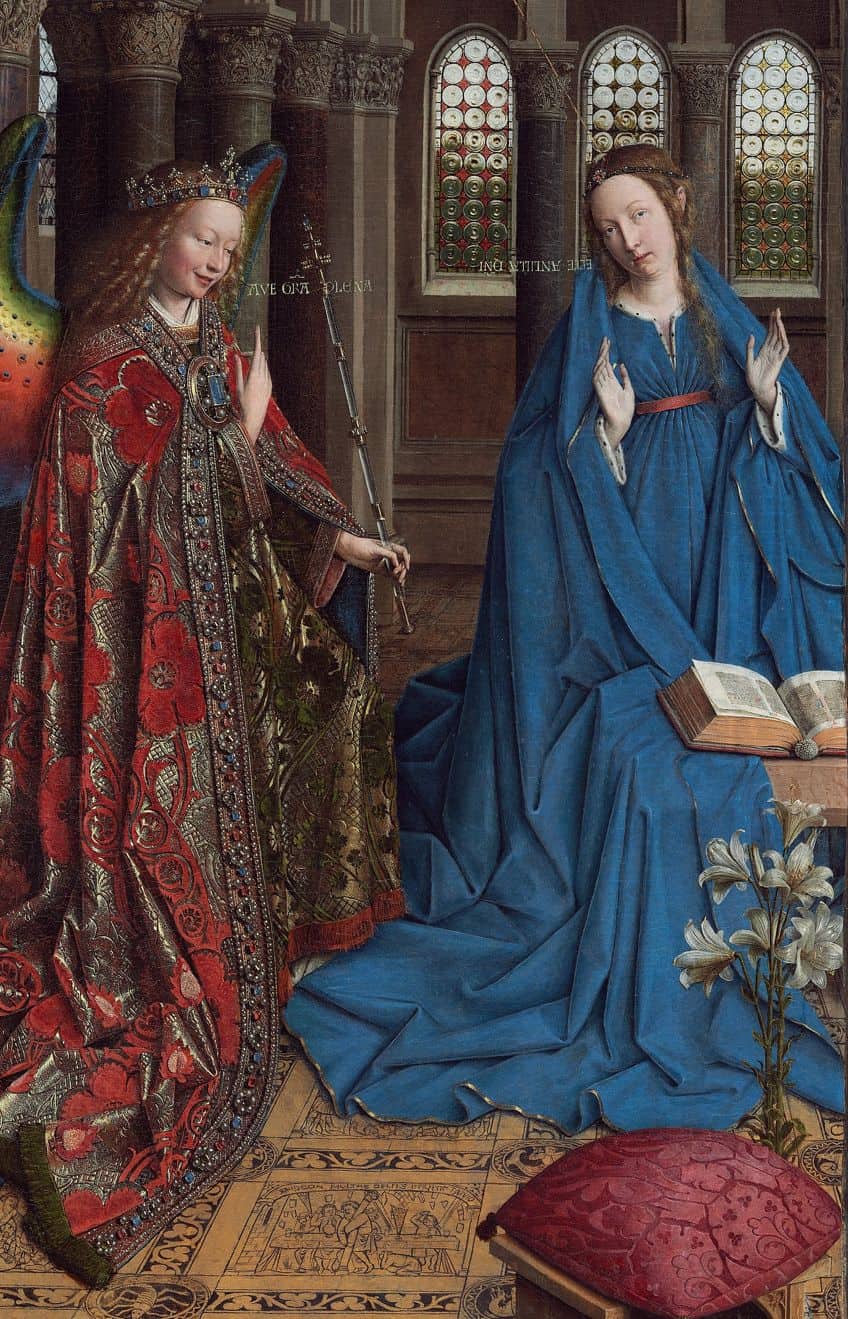
Angels in Renaissance Paintings
The ancient putto reappeared in art throughout the Italian Renaissance in both religious and mythical artworks and is sometimes referred to in English as a cherub, which is really one of the highest levels in the Christian angelic hierarchy. In religious artworks, they are usually depicted in groups and with wings, however, they are also depicted as only a winged head.
They are usually merely there to observe unless they are entertaining John the Baptist or Christ as newborns in depictions of the Holy Family.
Angels in Victorian Paintings
The model Jane Burden Morris came to exemplify a beauty standard for Pre-Raphaelite artists in the late 19th century. They produced a prototypical Victorian angel for stained glass windows and paintings by using her long dark hair and making her features more androgynous. Edward Burne-Jones and others utilized her imagery frequently and in numerous ways, established a new kind of angel aesthetic.
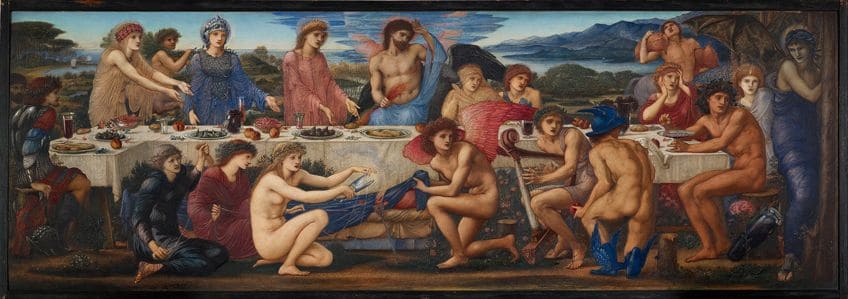
Angels in Islamic Art
Angels feature often in illustrated documents of Muhammad’s life in Islamic artworks. Angels are also regular features in Islamic art, and although Islamic angels are often depicted with colorful wings, they otherwise resemble winged Christian angels. Angels, such as the archangel Gabriel, are often represented as male, which corresponds to God’s rejection of feminine portrayals of angels in various Quranic texts.
Nonetheless, later Islamic art portrayals of angels are more feminine or sometimes even androgynous.
The Wonders of Creation by Zakariya al-Qazwini, published in the 13th century, explains Islamic angelology and is frequently illustrated with depictions of angels. Angels are typically painted in vibrant colors, lending them a remarkable vibrancy and ethereal translucence. While certain angels are known as the protectors of God’s Kingdom, others are connected to hell. Angels are shown alone and among people and animals in an undated copy of Zakariya al-Qazwini’s artwork from the Bavarian State Library in Munich. Angels are also depicted in Ottoman and Timurid manuscripts such as the Siyer-i Nebi.
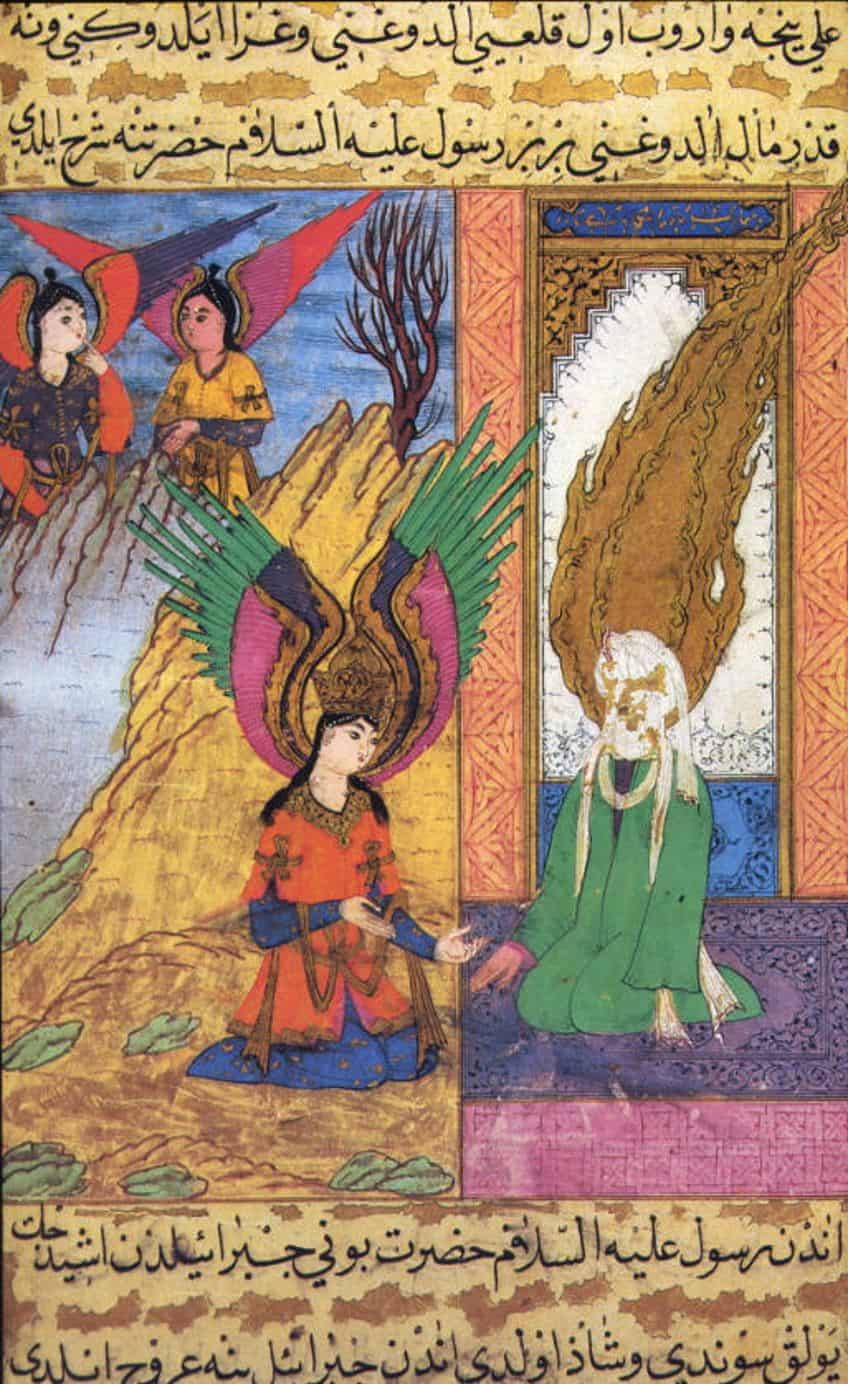
Angels in the Quran
Angels are mentioned several times in the Quran. In Quranic legends, these angels play both passive and active roles. In the account of Adam’s creation, God tells the angels that he wants to create man. The angels serve as witnesses to this pronouncement and Adam’s subsequent creation. Although there are many different versions of the narrative, Islamic traditions claim that God created Adam as a test for the angels. As a result, the role of angels is sometimes depicted as opposing mankind.
The zabāniya is another angel-like entity described in the Quran.
A zabāniya is a dark angel of hell who transports sinners’ souls to hell to punish them. In fact, zabāniyas’ representation bears several characteristics common to devils in Islamic artwork. Similarly, the fallen angel Iblis is depicted during his reluctance to humble himself before Adam, which results in his exile to the pit of hell. In contrast to the noble angels, he is shown as a black-skinned monstrous beast with horns and fiery eyes. Only his wings, with charred edges, remain as a reminder of his former celestial rank. Although portrayals of Muhammad are typically prohibited, the handful that does appear usually feature images of angels.
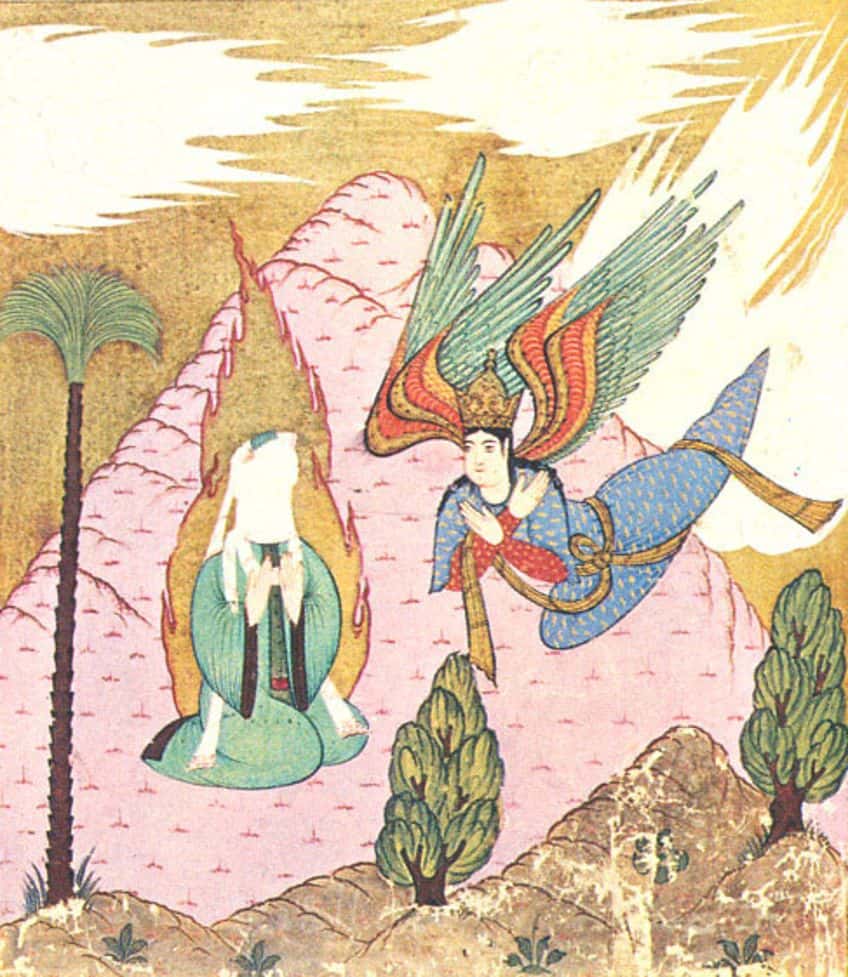
Famous Old Paintings of Angels
Angels have graced artworks with their heavenly presence for generations. These winged creatures have become a staple in art history transcending time, nations, and a range of mediums, appearing as ancient sculptures and gracing modern murals.
Now that we have covered angel art history, we can look at examples of angels in paintings that have captured the imagination of the public through the years.
Madonna and Child with Angels (1420) by Pietro di Domenico da Montepulciano
| Artist | Pietro di Domenico da Montepulciano (c. 1400s)
|
| Date of Completion | 1420 |
| Medium | Tempera on wood, gold ground |
| Dimensions (cm) | 87 x 66 |
| Current Location | The Metropolitan Museum of Art, New York City, United States |
The intricacy of the freely tooled motifs on the artwork’s golden ground distinguishes this stunning piece from similar works. The Madonna is seated on the grass, implying her humility, as well as her responsibilities as Queen of Heaven (angel wings tooled into the gold backdrop drape a crown over her).

The Madonna and the baby Christ are surrounded by a garden. She reveals her sleeping baby, alluding to his impending sacrifice and demise. It is one of the best paintings by Pietro di Domenico, who lived in the Marches area.
The angel painting has been preserved in its original frame, which is embellished with a continuous floral design and the artist’s signature.
Saint Michael Triumphs over the Devil (1468) by Bartolomé Bermejo
| Artist | Bartolomé Bermejo (1440 – 1498) |
| Date Completed | 1468 |
| Medium | Oil on wood |
| Dimensions (cm) | 179 x 82 |
| Current Location | National Gallery, London, United Kingdom |
This angel artwork has a distinct Medieval feel to it as if it is impenetrable. The saint stands out as a holy entity, greater than the man to the left on the hierarchical scale.

The devil is a hideous combination of creatures (bat, snake, bird, and perhaps a touch of a dragon) with numerous eyes, limbs, and mouths straight from the Middle Ages’ imagination. There is very little feeling of perspective, giving the image a cramped feeling. The background is comprised of gold leaf hammered with a brocade design.
We are not invited to take part in the action, but rather to observe the holy experience.
The Mystical Nativity (1500) by Sandro Botticelli
| Artist | Sandro Botticelli (1445 – 1510) |
| Date Completed | 1500 |
| Medium | Oil on canvas |
| Dimensions (cm) | 108 x 75 |
| Current Location | National Gallery, London, United Kingdom |
This work of art mixes the story of Christ’s birth from the New Testament with a depiction of his Second Coming from the Book of Revelation. The Second Coming would signal the world’s end and the reunion of committed Christians with God.

The circle of 12 angels at the painting’s top represents the 12 hours of the day and the 12 months of the year. The angels are rescuing individuals from religious limbo and delivering them from the demonic spirits. The phrases on the angels’ ribbons, which can only be viewed with infrared reflectography, relate to the Virgin’s 12 privileges.
The influence of Girolamo Savonarola, whose impact can be observed in a number of late works by Botticelli, has been suggested, however, the contents of the artwork may have been dictated by the person ordering it.
Virgin and Child with Four Angels (1515) by Gerard David
| Artist | Gerard David (1460 – 1523) |
| Date Completed | 1515 |
| Medium | Oil on wood |
| Dimensions (cm) | 63 x 39 |
| Current Location | The Metropolitan Museum of Art, New York City, United States |
Gerard David, Bruges’ prominent painter in the late 15th and early 16th centuries, carried on Jan van Eyck’s artistic tradition. He took the Virgin and Child from his predecessor’s well-known Virgin and Child at the Fountain and updated the composition by setting the figures on a large arched porch flanked by pillars with Italianate capitals and set against the landscape of contemporary Bruges.
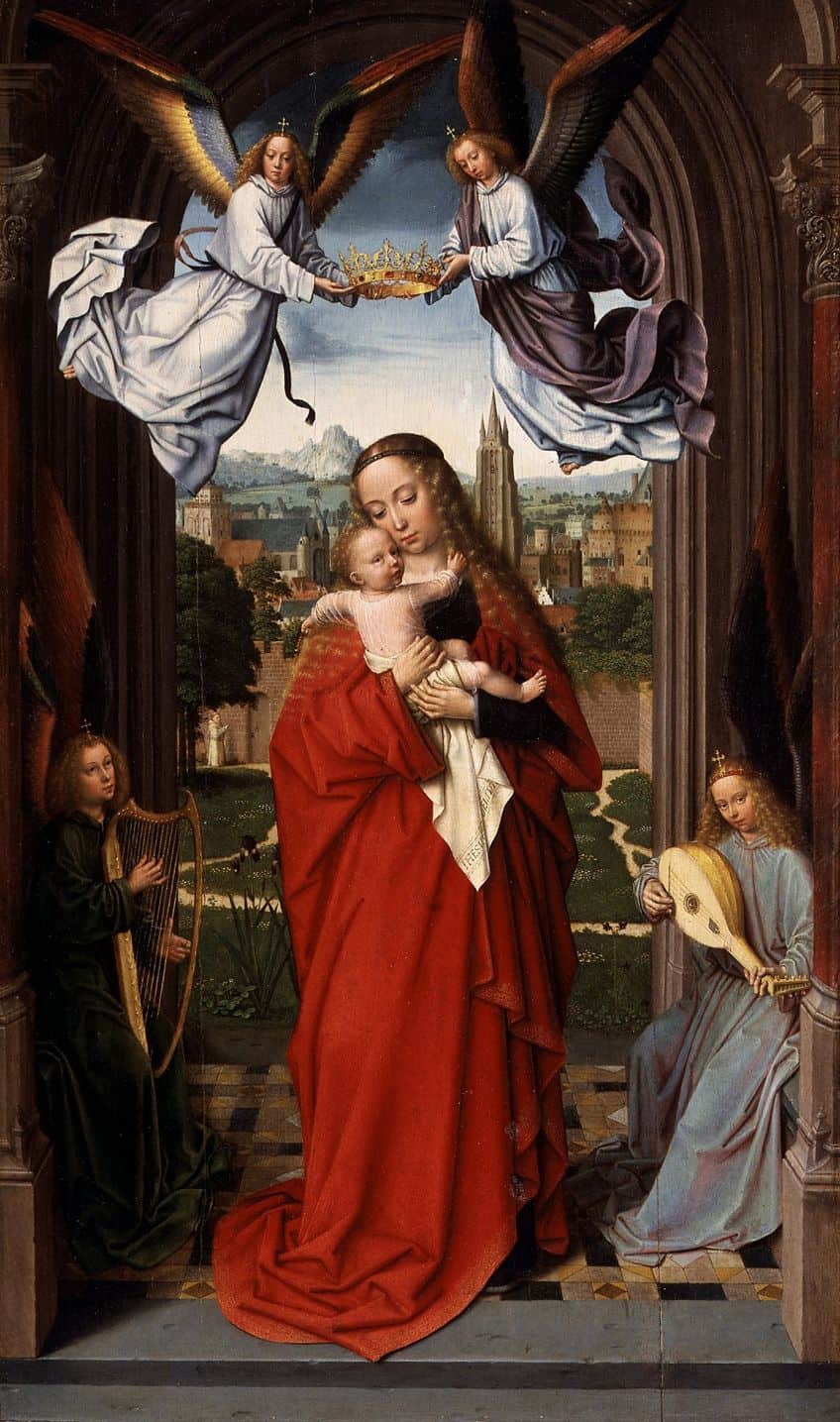
A Carthusian monk may be seen wandering and reading in the walled garden, implying that the painting was inspired by the old monastery at Genadedael, located just outside Bruges’ city walls. The angels in the artwork are depicted in a realistic style, with lifelike expressions and emotions reminiscent of human newborns. They are draped in long robes, their wings folded behind them, and their heads tilted slightly towards the Virgin and Child. The four angels are all staring at the infant with amazement and affection.
Their body postures also indicate that they are staring at the sacred scene with curiosity and deep concentration.
Conversion of Saul (1545) by Michelangelo
| Artist | Michelangelo di Lodovico Buonarroti Simoni (1475 – 1564) |
| Date Completed | 1545 |
| Medium | Fresco |
| Dimensions (cm) | 625 x 661 |
| Current Location | Cappella Paolina, Vatican Palace, Vatican City |
This angel artwork depicts Christ in the top left corner of the fresco. He makes a grand entry, encircled by a halo of light and an entourage of celestial hosts.

Some of these angels seem to be looking on in wonder and horror as the event unfolds, while others serve as a protective shield between the heavenly and the earthly things below. A light beam emanates from Christ and descends to a group of people.
The group’s expressions are incredibly dramatic, and Saul is the most striking of these earthly beings.
The Triumph of Victory (1614) by Peter Paul Rubens
| Artist | Peter Paul Rubens (1577 – 1640) |
| Date Completed | 1614 |
| Medium | Oil on wood |
| Dimensions (cm) | 263 x 160 |
| Current Location | Gemäldegalerie Alte Meister, Kassel, Germany |
Rubens depicts the victor as a hero in ancient armor, bloodied sword in hand, reclining as if enthroned over the defeated characters of Rebellion, symbolized by the flame, and Discord, from whose curls a serpent emerges.
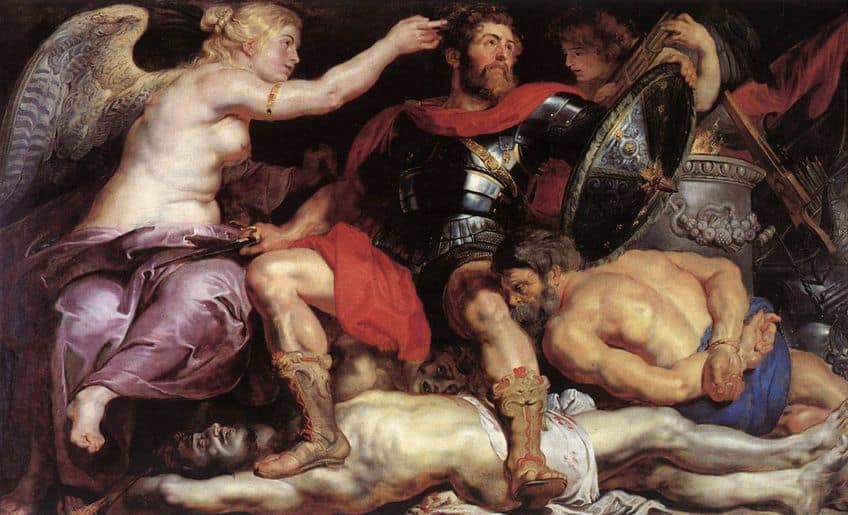
The angel of victory honors him with an oak leaf wreath. A tutelary spirit delivers a bunch of crossbow bolts, a sign of harmony, to the right, above the imprisoned figure of Barbarism. The holy fire of the Fatherland, which must be protected, glows on the altar.
The white, red, and crimson of the Habsburg banner behind it lend a more precise connection to the time of its conception to the universal, eternal metaphor.
The Annunciation of the Lord (1660) by Bartolome Esteban Murillo
| Artist | Bartolome Esteban Murillo (1617 – 1682) |
| Date Completed | 1660 |
| Medium | Oil on canvas |
| Dimensions (cm) | 98 x 100 |
| Current Location | Museo del Prado, Madrid, Spain |
The picture represents the scene reported in Saint Luke’s Gospel when the Angel Gabriel informs Mary that she would bear Jesus, God’s Son.

Murillo’s transparent color and vaporous artistic flourishes convert the home setting into one of celestial grandeur. The kneeling Mary is illuminated by a column of glorious golden light. Cloud-borne angels swirl above Mary, as Gabriel, floating to one side, signals to the Holy Spirit’s descending dove. In this instant of heavenly insight, Mary’s earthly preoccupations, symbolized by the sewing basket in the foreground, are forgotten.
The painting is similar to another Annunciation made around 1688 for the Capuchin church in Seville.
Song of the Angels (1881) by William-Adolphe Bouguereau
| Artist | William-Adolphe Bouguereau (1825 – 1905) |
| Date Completed | 1881 |
| Medium | Oil on canvas |
| Dimensions (cm) | 213 x 152 |
| Current Location | Forest Lawn Museum, California, United States |
The picture portrays a gathering of angels in a field, featuring a central angel playing a lute and singing. The other angels are raptly listening to her, some of them bearing instruments of their own. All of the angels have serene expressions on their faces, and they are all looking at the central angel with love and adoration as they play and sing with her. This is a great example of Bouguereau’s highly polished and technically skilled figurative works. The angels are shown in an idealized and romanticized fashion, with beautiful skin, flowing hair, and flawless features.
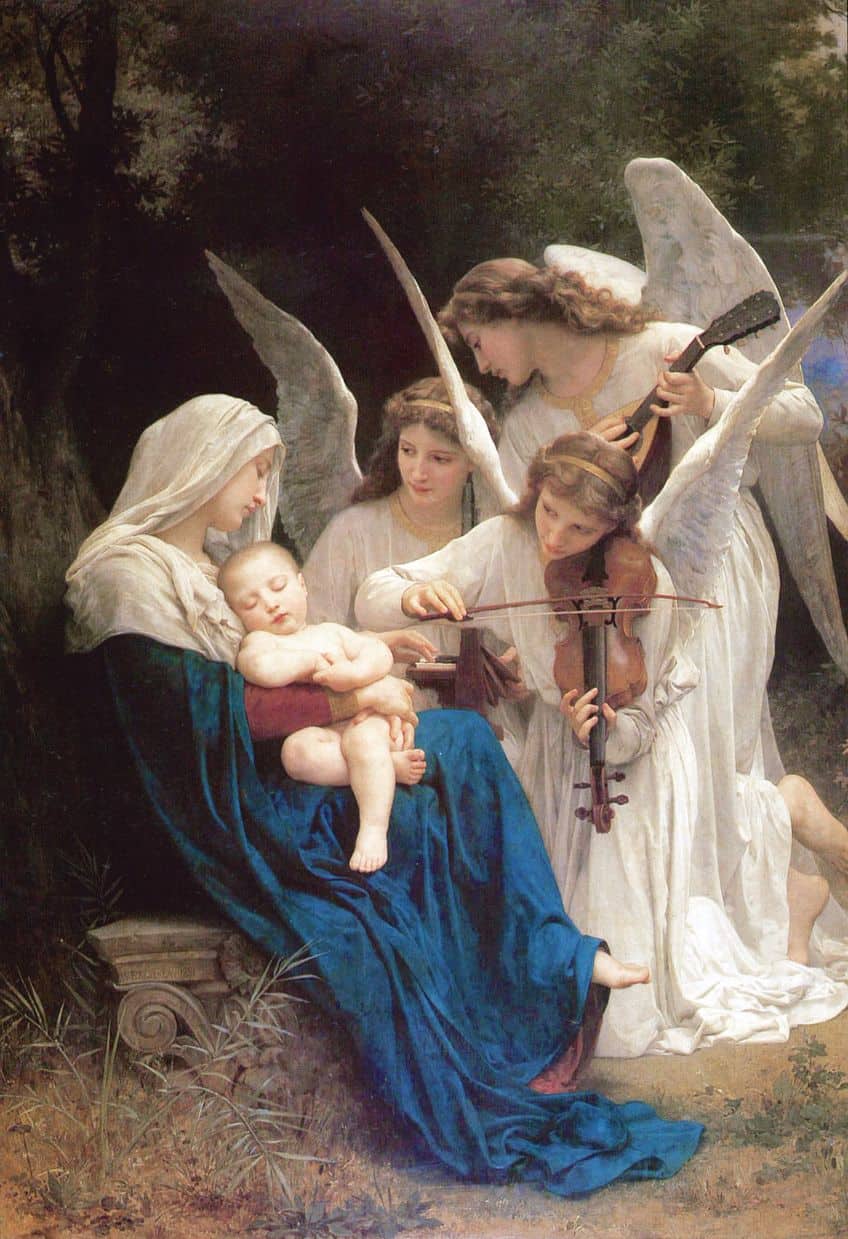
That completes our look at angel art history, as well as a few renowned old paintings of angels. Angels have been common characters in both human religion and mythology. Sometimes portrayed as beautiful beings in magnificent clothing, other times as fearsome beasts, they have always stood as protectors of the heavens.
Frequently Asked Questions
Why Were There Angels in Renaissance Paintings?
There was a growing interest in Christianity throughout the Renaissance, and numerous painters were commissioned to make religious works for chapels, churches, and private devotions. Angels, as celestial creatures that exist between God and humans, were a logical option for topics for these works because they are an integral aspect of Christian theology. Many Renaissance painters were drawn to humanistic values such as balance, harmony, and beauty. Angels, as flawless and everlasting beings, reflected these ideals and functioned as divine emblems. Many artworks portraying angels have a tranquil and harmonious setting that reflects these characteristics.
What Do Angels Represent in Art?
Angels are typically pictured as God’s messengers, bringing messages to people and acting as mediators between the heavenly and mortal realms. Angels are also frequently represented as defenders, guides, and comforters who keep watch over and care for people. Many works of art show angels as divine justice ambassadors.
Isabella studied at the University of Cape Town in South Africa and graduated with a Bachelor of Arts majoring in English Literature & Language and Psychology. Throughout her undergraduate years, she took Art History as an additional subject and absolutely loved it. Building on from her art history knowledge that began in high school, art has always been a particular area of fascination for her. From learning about artworks previously unknown to her, or sharpening her existing understanding of specific works, the ability to continue learning within this interesting sphere excites her greatly.
Her focal points of interest in art history encompass profiling specific artists and art movements, as it is these areas where she is able to really dig deep into the rich narrative of the art world. Additionally, she particularly enjoys exploring the different artistic styles of the 20th century, as well as the important impact that female artists have had on the development of art history.
Learn more about Isabella Meyer and the Art in Context Team.
Cite this Article
Isabella, Meyer, “Angel Art History – Exploring Angels Throughout the Ages.” Art in Context. August 28, 2023. URL: https://artincontext.org/angel-art-history/
Meyer, I. (2023, 28 August). Angel Art History – Exploring Angels Throughout the Ages. Art in Context. https://artincontext.org/angel-art-history/
Meyer, Isabella. “Angel Art History – Exploring Angels Throughout the Ages.” Art in Context, August 28, 2023. https://artincontext.org/angel-art-history/.


